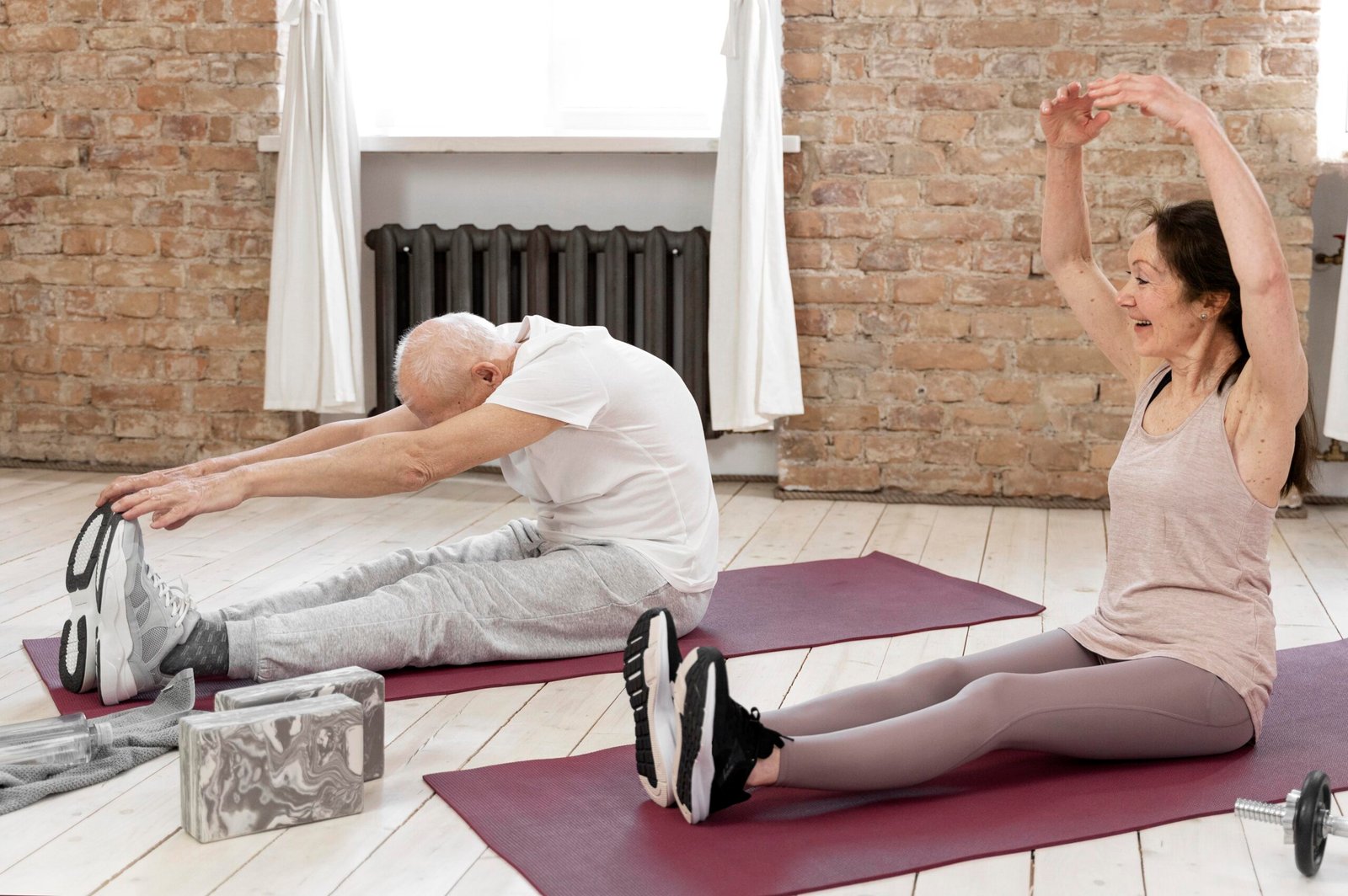
As we age, maintaining physical fitness becomes increasingly important for health and quality of life. One often-overlooked aspect of fitness is flexibility. While strength and cardiovascular health often take center stage, flexibility plays a crucial role in overall well-being for seniors. In this article, we will explore the importance of flexibility in senior fitness, its benefits, and practical ways to incorporate flexibility exercises into your routine.
Understanding Flexibility
Flexibility refers to the ability of muscles and joints to move through their full range of motion. It is essential for various daily activities, from bending to tie shoes to reaching for items on a high shelf. As we age, our muscles tend to shorten and tighten, leading to reduced flexibility and an increased risk of injuries. Therefore, incorporating flexibility training into your fitness routine is essential for maintaining mobility and independence.
Benefits/importance of Flexibility for Seniors
Flexibility training offers a host of benefits for seniors, including:
- Improved Mobility: Enhanced flexibility allows for greater ease of movement, making daily tasks simpler and more manageable.
- Reduced Risk of Injury: Stretching helps warm up muscles and improves joint health, decreasing the likelihood of strains, sprains, and falls.
- Better Posture: Improved flexibility can lead to better alignment of the spine and joints, reducing discomfort and promoting overall health.
- Enhanced Circulation: Stretching increases blood flow to the muscles, promoting recovery and reducing stiffness.
- Stress Relief: Flexibility exercises, especially those incorporating breathing techniques (like yoga), can help reduce tension and promote relaxation.
Common Flexibility Exercises for Seniors
Incorporating flexibility exercises into your routine doesn’t have to be complicated. Here are some effective and safe stretches for seniors:
- Seated Forward Bend: While sitting on the floor with legs extended, gently reach toward your toes. This stretch targets the hamstrings and lower back.
- Standing Quadriceps Stretch: Stand next to a wall or chair for support. Bend one knee, bringing your heel toward your buttocks, and grasp your ankle. Hold for 15-30 seconds to stretch the front of the thigh.
- Shoulder Rolls: Sit or stand tall and roll your shoulders forward and backward in a circular motion. This helps release tension in the shoulders and upper back.
- Cat-Cow Stretch: While on hands and knees, alternate between arching your back (cat) and lowering your belly while looking up (cow). This stretch increases spinal flexibility and releases tension in the back.
- Butterfly Stretch: Sit with the soles of your feet together, allowing your knees to fall outward. Gently press down on your knees with your hands to stretch the inner thighs.
Tips for Safe Stretching
When engaging in flexibility exercises, it’s essential to prioritize safety to prevent injury:
- Warm Up First: Before stretching, perform light aerobic activity for 5-10 minutes to warm up your muscles.
- Listen to Your Body: Stretch to the point of mild discomfort, not pain. If something doesn’t feel right, stop.
- Breathe Deeply: Inhale deeply during stretches to help relax muscles and increase effectiveness.
- Hold Stretches: Aim to hold each stretch for at least 15-30 seconds to allow muscles to lengthen properly.
- Stay Consistent: Incorporate flexibility exercises into your routine at least 2-3 times per week for the best results.
Integrating Flexibility into Your Fitness Routine
Flexibility training can be easily integrated into any fitness routine. Here are some practical ways to incorporate flexibility exercises:
- Warm-Up Routine: Include dynamic stretches in your warm-up before other workouts, such as strength training or cardio.
- Cool Down: After any exercise, take 5-10 minutes to stretch and cool down, focusing on all major muscle groups.
- Join a Class: Consider enrolling in yoga or Pilates classes, which emphasize flexibility and balance.
- Daily Routine: Set aside time each day to perform flexibility exercises. A consistent practice can lead to significant improvements over time.
The Connection Between Flexibility and Overall Health
The importance of flexibility in senior fitness extends beyond physical benefits. Improved flexibility can positively impact mental health, too. Engaging in regular stretching routines can reduce feelings of stress and anxiety, leading to enhanced overall well-being. Additionally, maintaining flexibility can boost confidence in physical abilities, encouraging seniors to stay active and engaged in social and recreational activities.
Read More: best cardio exercises for seniors to enhance heart health
Conclusion
Flexibility is a vital component of senior fitness that should not be overlooked. By prioritizing flexibility exercises, seniors can enhance mobility, reduce the risk of injury, and improve overall health. Incorporate these tips and stretches into your routine to experience the numerous benefits of flexibility training. Remember, it’s never too late to start, and even small changes can lead to significant improvements in quality of life. Embrace the importance of flexibility in senior fitness, and enjoy a more active, healthier lifestyle!








